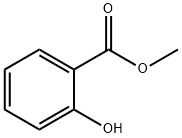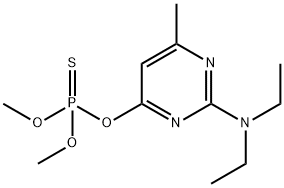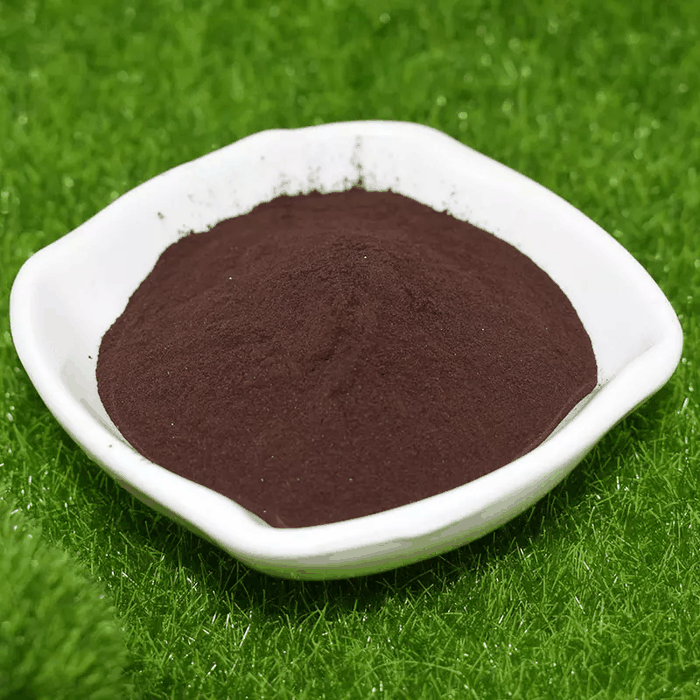3-Methyl butynol
Synonym(s):2-Methyl-3-butyne-ol;3-Methyl-1-butyne-3-ol;Dimethyl ethynyl carbinol
- CAS NO.:115-19-5
- Empirical Formula: C5H8O
- Molecular Weight: 84.12
- MDL number: MFCD00004467
- EINECS: 204-070-5
- SAFETY DATA SHEET (SDS)
- Update Date: 2025-01-27 09:38:02

What is 3-Methyl butynol ?
Chemical properties
colourless to light yellow liquid.
Methylbutynol (3-Methyl butynol) is a colorless, transparent, and aromatic liquid that can be consumed at room temperature. It is soluble in water and fatty acids and miscible with acetone, benzene, carbon tetrachloride, and petroleum ether but insoluble in ammonia. Methylbutynol and water form an azeotrope with an azeotropic point of 91 °C in the methylbutynol composition of 74% and the water composition of 26%. Methylbutynol is chemically active and has the common reactions of alcohol groups and unsaturated triple bonds, such as addition, polymerization, esterification, and oxidation reactions.
The Uses of 3-Methyl butynol
Stabilizer in chlorinated solvents, viscosity reducer and stabilizer, electroplating brightener, intermediate.
The Uses of 3-Methyl butynol
2-Methyl-3-butyn-2-ol is used as an intermediate in the manufacture of products for the agrochemical and specialty chemical industry.
What are the applications of Application
Methylbutynol (3-Methyl butynol) is used as an intermediate in the pharmaceutical industry for the synthesis of the anticancer drug citricin. It is used as a raw material for the synthesis of pyrethroids in the pesticide industry and as a raw material in the synthesis of terpene perfumes. Because methylbutynol has good corrosion inhibition and synergistic effect, it can effectively prevent hydrogen embrittlement of metal. As an essential component of high-efficiency acidification corrosion inhibitor, it is widely used in the oil and gas industry. Methylbutynol can be applied as an acetylene carrier to safely and economically transport large acetylene quantities. This usage can be accomplished in three steps: Firstly, acetylene is stored in the form of methyl butanol by reacting the former with acetone. Secondly, the resulting methylbutynol is transported from the origin of acetylene to the place of consumption. Thirdly, acetylene and acetone can be obtained by cleavage of methylbutynol and separated to yield pure products for further applications.
Preparation
3-Methyl butynol is produced from Acetone and Acetylene in liquid Ammonia with Sodamide (or in Cellosolve with Potassium hydroxide). The process yields Methylbutynol which can be hydrogenated to Methylbutenol.
General Description
Colorless to straw yellow liquid.
Air & Water Reactions
Highly flammable.
Reactivity Profile
3-Methyl butynol is an alcohol. Flammable and/or toxic gases are generated by the combination of alcohols with alkali metals, nitrides, and strong reducing agents. They react with oxoacids and carboxylic acids to form esters plus water. Oxidizing agents convert them to aldehydes or ketones. Alcohols exhibit both weak acid and weak base behavior. They may initiate the polymerization of isocyanates and epoxides.
Hazard
Flammable, dangerous fire risk.
Health Hazard
Contact will cause eye and skin irritation. Vapor exposure may cause eye and respiratory tract irritation.
Fire Hazard
Special Hazards of Combustion Products: Irritating and toxic gases, such as carbon dioxide and carbon monoxide, may be produced in fire.
Flammability and Explosibility
Highly flammable
Synthesis
Three parts of the strong basic anion exchange resin Amberlite IRA400 were suspended in 30 parts of 7% sodium hydroxide solution to change to OH type. After washing to neutral with water, the resin was suspended in methanol, and after 15–60 min, methanol was discharged. The treatment with methanol was repeated as described above until the water content of the effluent methanol was less than 0.1% and the water content of the ion exchange resin was less than 0.2%. The tubular reactor was filled with the ion exchange resin, and then acetone was saturated with acetylene, and liquid ammonia was introduced into the reactor at 2.5 MPa and 40 °C. Excess acetylene in reactants was used to reduce the side reaction of acetone. After ethynylation, the reaction solution was subjected to a flash evaporation at 50 °C. The remaining solution was distilled to obtain methylbutynol (3-methyl butynol).
Properties of 3-Methyl butynol
| Melting point: | 3 °C |
| Boiling point: | 104 °C(lit.) |
| Density | 0.868 g/mL at 25 °C(lit.) |
| vapor pressure | 15 mm Hg ( 20 °C) |
| refractive index | n |
| Flash point: | 77 °F |
| storage temp. | Store below +30°C. |
| solubility | Fully miscible. |
| form | Powder or Crystals |
| pka | 13.34±0.29(Predicted) |
| color | White to yellow-beige to brown |
| PH | 7 (H2O, 20℃) |
| explosive limit | 1.8-16%(V) |
| Water Solubility | miscible |
| Merck | 14,6034 |
| BRN | 635746 |
| Stability: | Stable. Flammable. Incompatible with strong oxidizing agents. |
| CAS DataBase Reference | 115-19-5(CAS DataBase Reference) |
| NIST Chemistry Reference | 3-Butyn-2-ol, 2-methyl-(115-19-5) |
| EPA Substance Registry System | 2-Methyl-3-butyn-2-ol (115-19-5) |
Safety information for 3-Methyl butynol
| Signal word | Danger |
| Pictogram(s) |
 Flame Flammables GHS02  Corrosion Corrosives GHS05  Exclamation Mark Irritant GHS07  Health Hazard GHS08 |
| GHS Hazard Statements |
H225:Flammable liquids H302:Acute toxicity,oral H318:Serious eye damage/eye irritation H336:Specific target organ toxicity,single exposure; Narcotic effects |
| Precautionary Statement Codes |
P202:Do not handle until all safety precautions have been read and understood. P210:Keep away from heat/sparks/open flames/hot surfaces. — No smoking. P280:Wear protective gloves/protective clothing/eye protection/face protection. P301+P312:IF SWALLOWED: call a POISON CENTER or doctor/physician IF you feel unwell. P305+P351+P338:IF IN EYES: Rinse cautiously with water for several minutes. Remove contact lenses, if present and easy to do. Continuerinsing. P308+P313:IF exposed or concerned: Get medical advice/attention. |
Computed Descriptors for 3-Methyl butynol
New Products
Indole Methyl Resin tert-butyl 9-methoxy-3-azaspiro[5.5]undecane-3-carboxylate Boc-His(Boc)-OH 2-CTC Resin 4-Chloro-7-tosy1-7Hpyrrolo[2,3-d]pyrimidine 5,7-Dibromo-1H-indole 2,5-dichloro-N-hydroxy-4,6-dimethylpyridine-3-carboximidamide 2,2-Dimethoxy-7-azaspiro[3.5]nonane hydrochloride 4-chloromethyl-5-methyl-1,3-dioxol-2-one (DMDO-Cl) R-2-BENZYLOXY PROPIONIC ACID 1,1’-CARBONYLDIIMIDAZOLE 1,1’-CARBONYLDI (1,2-4 TRIAZOLE) N-METHYL INDAZOLE-3-CARBOXYLIC ACID 4-((2-hydroxyethyl)thio)benzoic acid 1-(TERT-BUTOXYCARBONYL)-2-PYRROLIDINONE Methyl 6-methylnicotinate 3-Pyridineacrylic acid tert-Butyl carbazate TETRAHYDRO-2H-PYRAN-3-OL 2-((4-morpholinophenylamino) (methylthio) methylene) malononitrile 3-(4-morpholinophenylamino)-5-amino-1H-pyrazole-4-carbonitrile 2,4-dihydroxybenzaldehyde 1,3-Diethyl-1,3-Diphenylurea Methyl 2-methylquinoline-6-carboxylateRelated products of tetrahydrofuran








You may like
-
 115-19-5 2-Methyl-3-butyn-2-ol 98%View Details
115-19-5 2-Methyl-3-butyn-2-ol 98%View Details
115-19-5 -
 2-Methyl-3-butyn-2-ol CAS 115-19-5View Details
2-Methyl-3-butyn-2-ol CAS 115-19-5View Details
115-19-5 -
 2-Methyl-3-butyn-2-ol CAS 115-19-5View Details
2-Methyl-3-butyn-2-ol CAS 115-19-5View Details
115-19-5 -
 2-Methyl-3-butyn-2-ol CAS 115-19-5View Details
2-Methyl-3-butyn-2-ol CAS 115-19-5View Details
115-19-5 -
 Pyridine 99.5% HPLC /UV SpectroscopyView Details
Pyridine 99.5% HPLC /UV SpectroscopyView Details
110-86-1 -
 Dibutyl PhthalateView Details
Dibutyl PhthalateView Details
84-74-2 -
 Imidazole Spot supply, competitive priceView Details
Imidazole Spot supply, competitive priceView Details
288-32-4 -
 Thiourea 99% ARView Details
Thiourea 99% ARView Details
62-56-6
